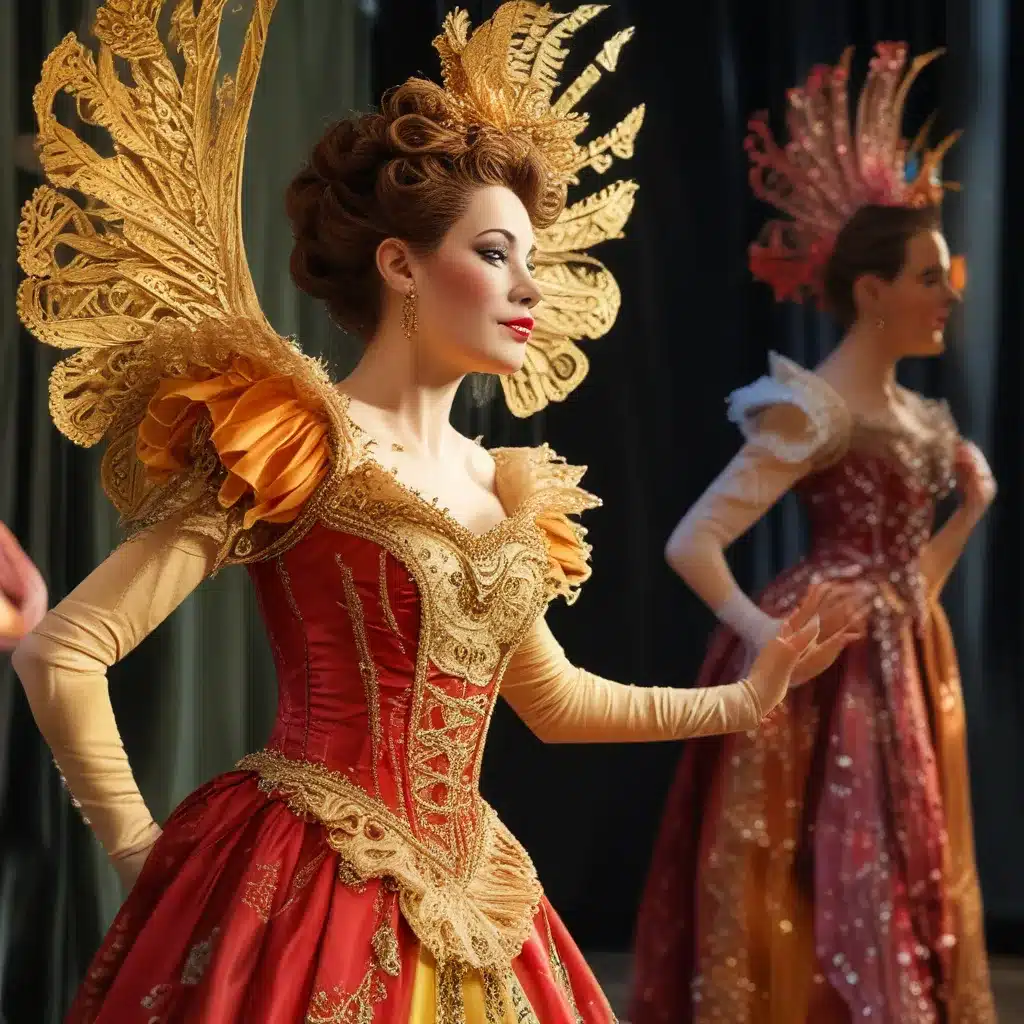
Costumes as the Heart of Musical Theatre
As a self-proclaimed “front mezzanine junkie” and avid lover of the stage, there’s nothing quite like the experience of being transported into a world of musical theatre magic. And at the heart of that magic lies the intricate, awe-inspiring costumes that bring the characters to life before our very eyes.
Picture this: the lights dim, the orchestra swells, and a dazzling ensemble takes the stage, each performer adorned in a symphony of color, texture, and design. It’s in these moments that the true power of costume design shines through, elevating the performance from mere acting to a mesmerizing work of art.
The Art of Transformation
Just like the talented actors who breathe life into their characters, the costume designers behind the scenes are true alchemists, transforming the ordinary into the extraordinary. Their intricate work doesn’t just cover the body; it delves deeper, revealing the very essence of the character’s personality, history, and emotional journey.
Take, for example, the iconic costumes of Broadway’s “Mean Girls.” Who could forget the striking contrast between Regina George’s perfectly tailored pink ensemble and Cady Heron’s more subdued, naturalistic style? These sartorial choices not only reflected the characters’ social status and personal values but also foreshadowed the pivotal power struggle that would unfold on stage.
Costume as Storytelling
But costume design is more than just visual aesthetics; it’s a powerful narrative tool that can transport audiences to different times, places, and worlds. Just as the backgrounds of a D&D character can shape their identity and role in the story, the costumes of a musical theatre character can unlock a deeper understanding of their motivations, struggles, and transformations.
Imagine the regal, brocade-adorned gowns of a Regency-era heroine, the rugged workwear of a Depression-era laborer, or the shimmering, other-worldly garments of a futuristic sci-fi protagonist. Each costume choice is a carefully crafted puzzle piece that, when assembled, reveals the full tapestry of the story.
The Costume Designer’s Toolkit
So, what exactly goes into the process of creating these breathtaking costumes? It’s a intricate and multi-faceted endeavor, requiring a diverse array of skills and resources.
First and foremost, costume designers must possess a deep understanding of historical fashion, textiles, and the cultural significance of clothing. They must meticulously research the time period, social norms, and artistic influences that will shape the look and feel of the costumes.
But the real magic happens in the design studio, where designers unleash their creativity and technical prowess. Using a range of tools, from sketching and draping to pattern-making and sewing, they transform their initial visions into tangible garments that capture the essence of each character.
| Tool | Purpose |
|---|---|
| Sketchbooks | Capturing initial design ideas and brainstorming |
| Sewing Machines | Constructing the garments |
| Fabric Swatches | Experimenting with different textures and materials |
| Dress Forms | Draping and fitting the costumes on the body |
| Dye and Distressing Techniques | Adding depth, age, and character to the costumes |
And the work doesn’t stop there. Costume designers must also collaborate closely with other members of the production team, from the director and choreographer to the lighting and set designers, to ensure that their creations seamlessly integrate with the overall artistic vision.
The Transformative Power of Costumes
As I reflect on my own experiences in the world of musical theatre, I’m always struck by the sheer power of costume design to captivate and inspire. Whether it’s the glittering gowns of a Rodgers and Hammerstein classic or the edgy, punk-inspired ensembles of a contemporary rock musical, the costumes have the ability to transport us to entirely new realms of imagination and emotion.
Take, for instance, my recent visit to the Musical Theatre Center, where I had the privilege of witnessing the creation of costumes for their upcoming production of “Hamilton.” The level of detail and craftsmanship was simply breathtaking, from the meticulously tailored military uniforms to the intricate embroidery that adorned the coats of the Founding Fathers.
As I watched the costume designers at work, I couldn’t help but be struck by the transformative power of their creations. With each stitch and every delicate flourish, they were breathing life into the characters, imbuing them with a tangible sense of history, personality, and emotional depth.
The Unsung Heroes of Musical Theatre
And yet, despite the critical role they play in bringing the magic of musical theatre to life, costume designers often remain the unsung heroes of the industry. Their contributions are frequently overshadowed by the dazzling performances and show-stopping numbers that captivate audiences.
But to me, the true magic of musical theatre lies in the seamless integration of all its elements – the music, the acting, the choreography, and, of course, the costumes. Each component is essential, working in perfect harmony to create a truly immersive and unforgettable experience.
So, the next time you find yourself transported by the splendor of a musical theatre production, take a moment to appreciate the unsung heroes behind the scenes – the talented costume designers whose creative vision and meticulous craftsmanship bring the characters to vibrant life, one stitch at a time.

